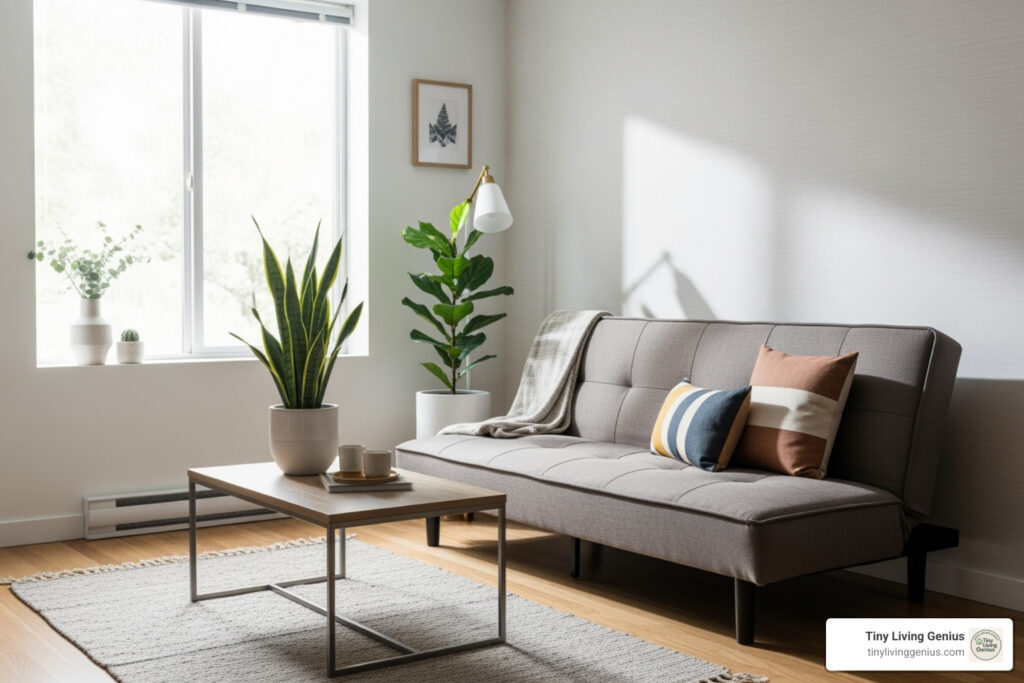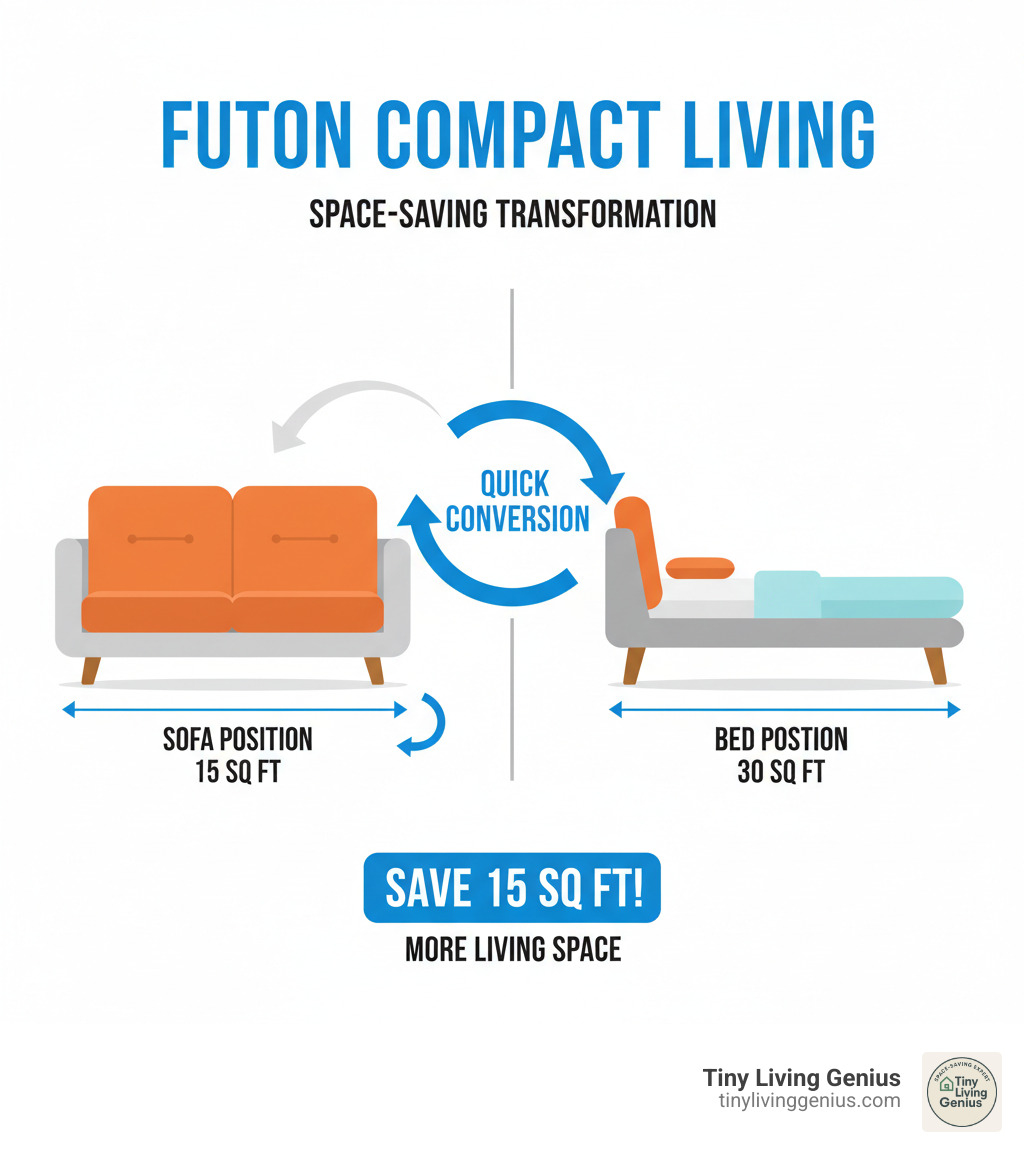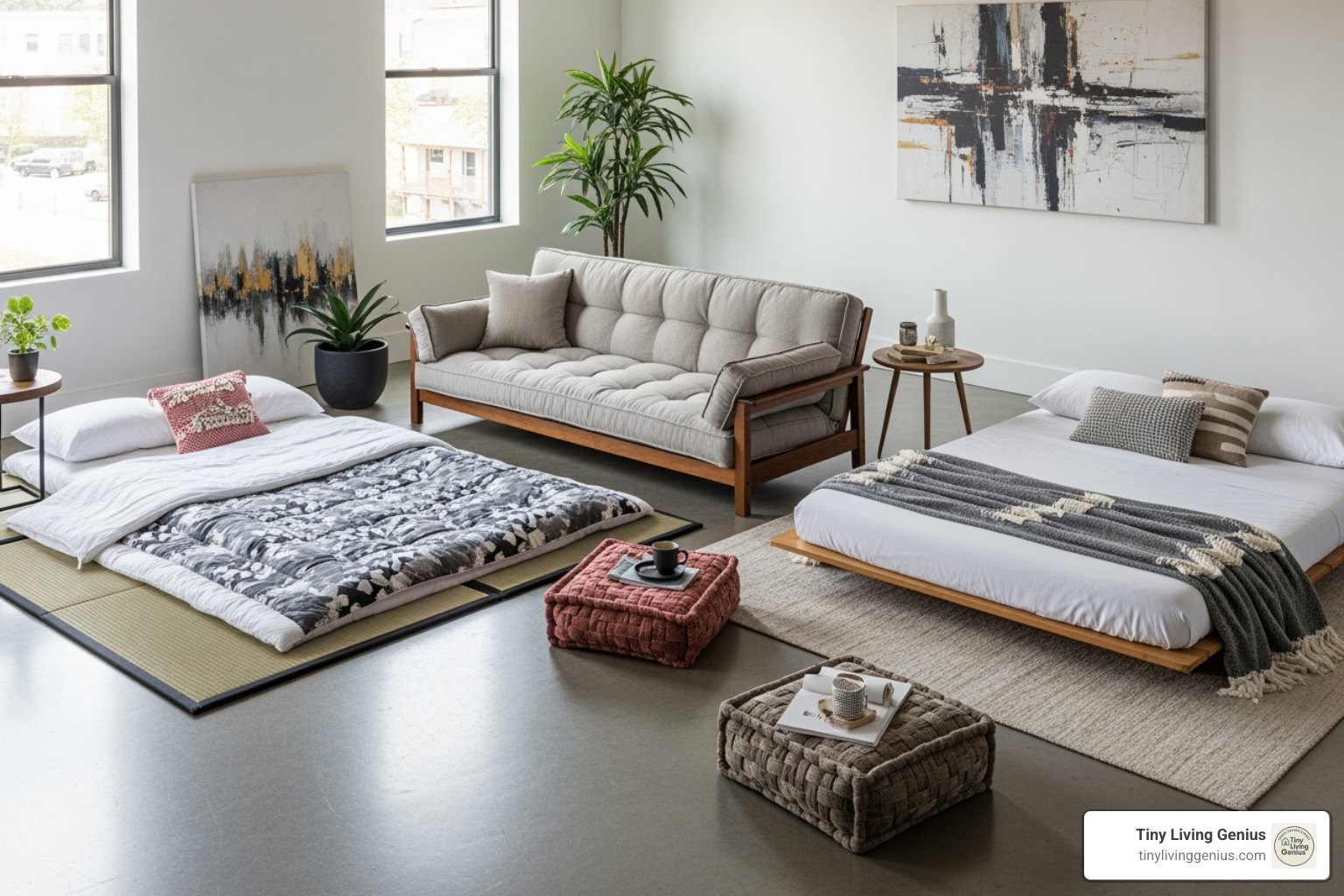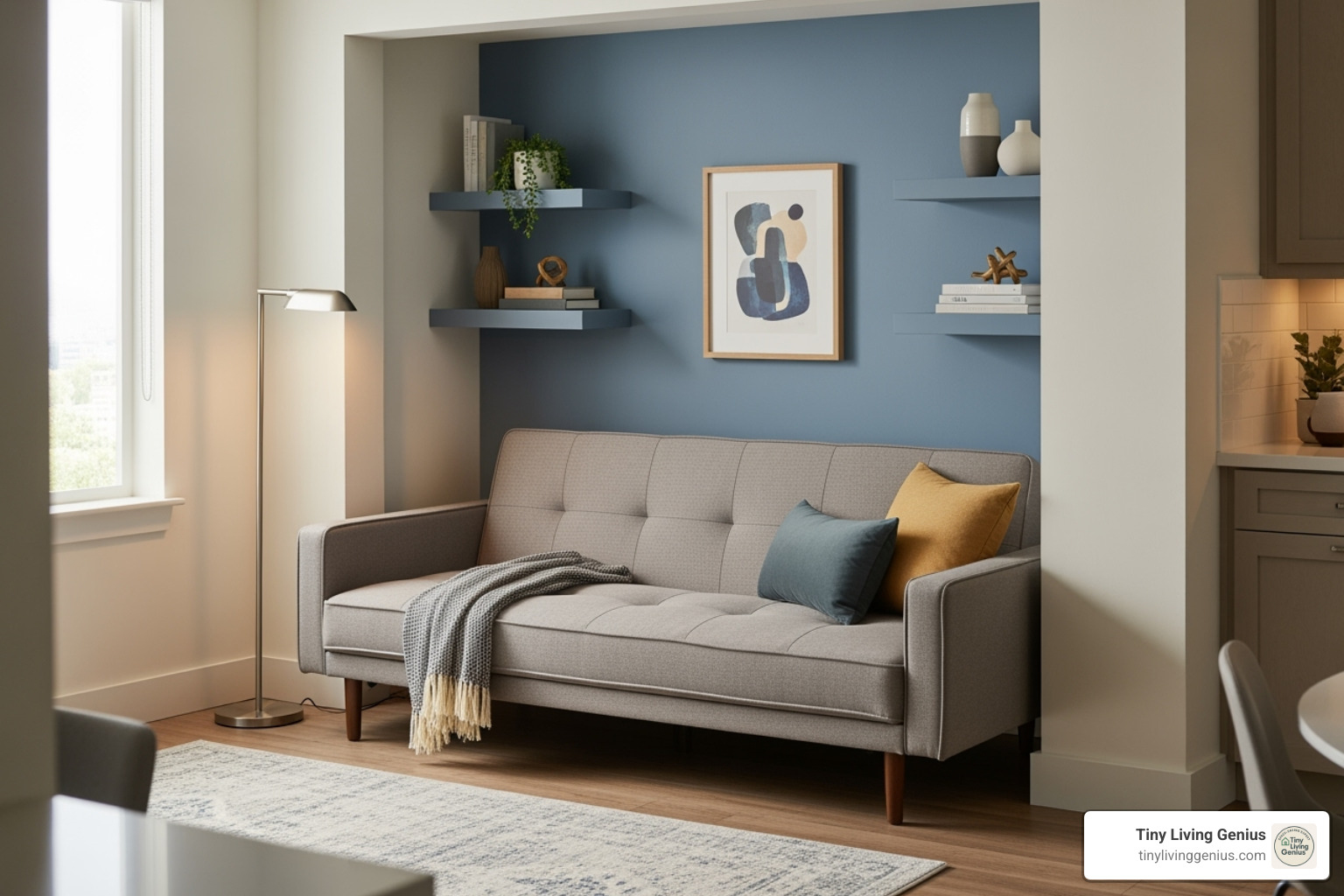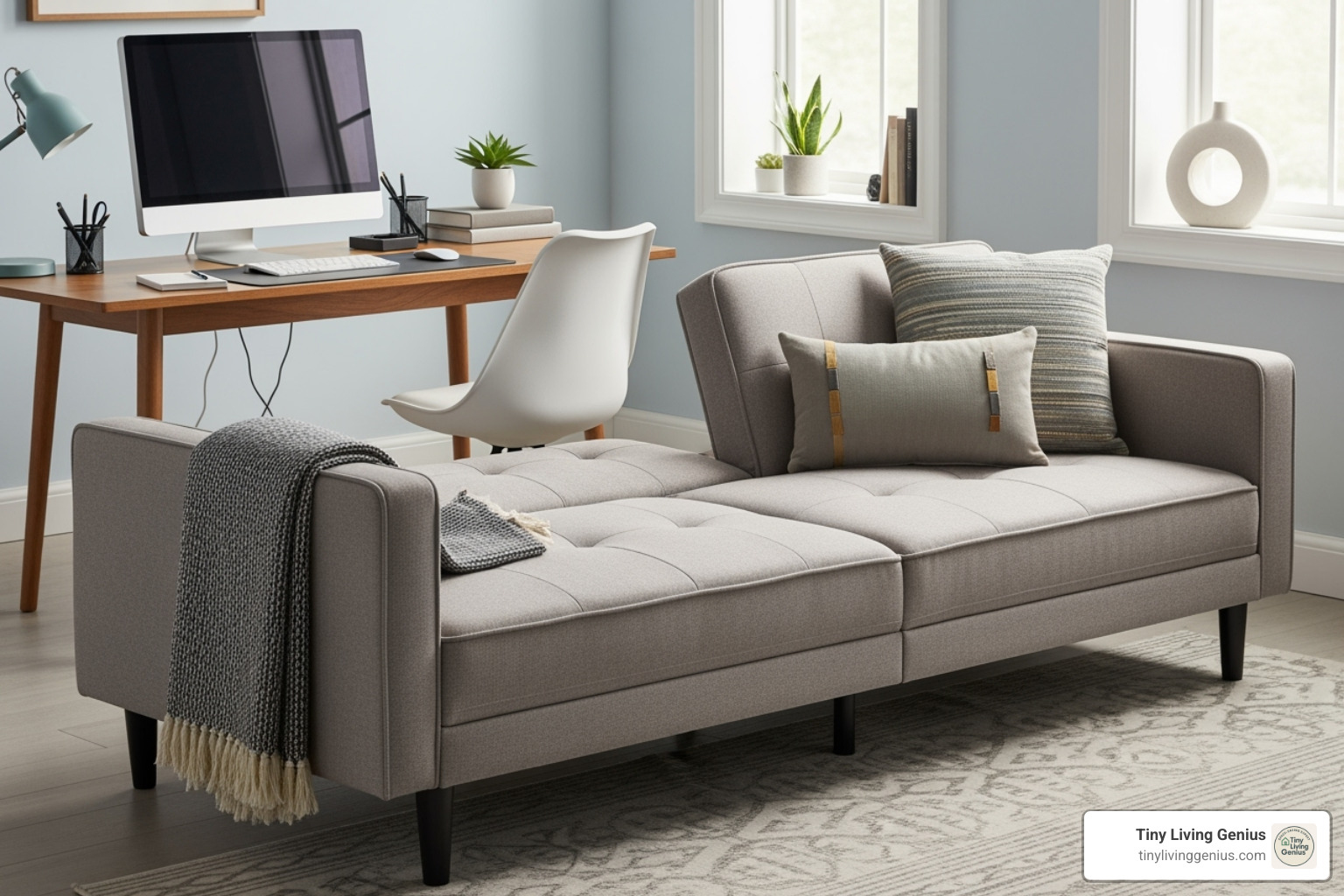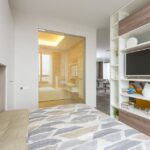Futon Compact Living: Easy 2025 Space-Saving Hero
Why Futon Compact Living is the Smart Solution for Small Spaces
Futon compact living is a practical approach to maximizing small spaces. It uses a single piece of furniture that serves as both a comfortable sofa and a functional bed, solving the common problem of limited square footage. Traditional sofas and beds consume precious floor space, making a home feel cramped. Futons combine these two functions into one streamlined piece.
Key Benefits of Futons for Compact Living:
- Space-Saving Design: Eliminates the need for a separate sofa and bed.
- Cost-Effective: More affordable than buying two pieces of furniture.
- Quick Conversion: Transforms from seating to sleeping in seconds.
- Lightweight & Mobile: Easier to move than traditional furniture.
- Versatile Placement: Fits studios, dorms, guest rooms, and home offices.
During the day, you have comfortable seating for working or relaxing. At night, it converts into a proper sleeping surface. This dual functionality is what compact living demands. Futons typically cost less than separate pieces, making them ideal for student budgets and first apartments. They’re also lighter and easier to move, which is perfect for renters or homes with narrow doorways.
I’m Ramy Saber, a Civil Engineer and founder of Tiny Living Genius. I’ve spent years researching space-saving solutions to help people maximize comfort in compact homes. Through my work, I’ve seen how futon compact living transforms cramped areas into functional, comfortable spaces.
Why a Futon is the Ultimate Space-Saver
Futon compact living is about working smarter with the space you have. In a small apartment, every piece of furniture needs to pull double duty, and that’s where futons excel. You get a comfortable sofa by day and a proper sleeping surface by night, eliminating the need to squeeze both a couch and a bed into a cramped room. This dual functionality is a game-changer for tight quarters.
Think about the floor space you reclaim. A traditional bed can consume a third of a studio apartment’s living area. A futon solves this, giving you back precious square footage. The cost savings are also impressive; instead of buying two separate pieces, you make one smart purchase. This makes futons perfect for students on tight budgets or anyone furnishing their first apartment.
Another practical advantage is mobility. Futons are significantly lighter than traditional sofas and bed frames, making them much easier to transport. This is a huge benefit for renters who move frequently. For more creative approaches to maximizing your space, explore our collection of Space Saving Furniture ideas.
The Practical Advantage of Dual Functionality
In a studio apartment where your living room and bedroom are one, a futon offers a seamless transition. During the day, you have a place to sit and work. At night, you simply adjust one piece to create a comfortable bed. This flexibility is invaluable in studio apartments, dorm rooms, and guest rooms. Your living area isn’t dominated by a bed all day; instead, you have a functional seating area that adapts to your needs.
The conversion process is remarkably quick. Modern futons, like this contemporary sleeper, convert from sofa to bed in seconds. Guest rooms also benefit enormously. Instead of a dedicated bed sitting unused, a futon allows the room to function as a home office or hobby space. When visitors arrive, the conversion takes moments, eliminating the need for a guest bed that sits idle most of the year.
A Budget-Friendly Furnishing Solution
Furnishing a small space can be expensive. A decent couch and a quality bed can easily cost over $1,000 combined. A futon provides both functions in a single purchase, typically ranging from $200 to $800. The math is simple: you save hundreds of dollars while getting everything you need. This makes futons ideal for students or young professionals furnishing a first apartment.
The savings extend to long-term value. A futon adapts as your life changes, moving from a primary bed to guest room furniture. This versatility means you’re not constantly replacing items. Modern options offer genuine comfort and style without the premium price tag of separate pieces. For more guidance on furnishing your compact space, check out The Ultimate Guide to Small Apartment Furniture: Smart Solutions for Tiny Living. A futon proves you can maximize both your space and your budget.
A Guide to Futons for Futon Compact Living
Finding the right futon for futon compact living means choosing a piece that fits your space and lifestyle. The perfect futon balances size, frame, and mattress quality to create a practical and comfortable solution.
Futons and traditional sofa beds are different. Futons offer distinct advantages for small spaces, primarily customizability. You choose the frame and mattress separately, controlling thickness, firmness, and material. Sofa beds are a package deal with limited options. Futons are also lighter, easier to move (mobility), and generally more affordable (price). Their simple bi-fold, tri-fold, or click-clack mechanisms are reliable, and their covers are often easier for cleaning.
Key Mattress Features for Comfort and Durability
Your futon mattress is crucial for comfort, especially if it’s your primary bed and sofa. For regular sleeping, aim for a mattress that’s at least six to eight inches thick to avoid feeling the frame.
The material shapes your experience. Cotton offers firm, breathable support. Foam provides more cushioning, while innerspring mattresses give a traditional bed feel. Memory foam has become a game-changer, contouring to your body for pressure relief whether sitting or sleeping. If you’re leaning toward this option, the Mainstays Memory Foam Convertible Futon delivers on both comfort and durability.
Upholstery affects longevity and maintenance. Look for durable fabrics like polyester suede. While many covers aren’t machine washable, spot treating with a professional fabric cleaner keeps your futon fresh.
Frame Styles Suited for Small Spaces
The frame determines how your futon functions and fits.
- Bi-fold frames are the common workhorse, folding in half to convert from bed to sofa.
- Tri-fold frames (or A-frames) are champions for tight spaces, as the mattress folds into three sections for a smaller sofa footprint. Some can also be positioned as a chaise lounge.
- Wood frames offer classic appeal and stability, while metal frames provide a lighter, more contemporary look.
Choosing the right frame transforms your futon into a solution that genuinely improves your living space. For more innovative approaches, see our guide on Creative Furniture Solutions for Small Spaces.
The Armless Futon Advantage in Futon Compact Living
Armless futons are brilliant for small spaces because you gain precious inches. The smaller footprint means you can fit a larger sleeping surface in a tight room. They also push flush against walls, creating clean lines and making them perfect for corner placement. This creates visual openness, making the room feel airier. For armrests, simply use decorative throw pillows, which offer support and flexibility. Armless futons prove that less is more in futon compact living.
Daily Sleeper vs. Occasional Guest Bed
When choosing a futon for futon compact living, its intended use is the most important factor. Will it be your main bed or just a spot for occasional guests? The answer guides your decisions on mattress quality, frame construction, and budget.
For everyday use, comfort and support are critical. For a guest bed, you can be more flexible and prioritize style or a smaller footprint. The good news is that a futon sofa bed can be comfortable for daily use when paired with a high-quality mattress. It’s about making a smart furniture choice for your lifestyle. For more ideas, check out our guide on Best Furniture Ideas for Small Spaces.
Choosing a Futon for Frequent Use
If your futon is your primary bed, prioritize quality.
- Mattress Quality: This is your number one priority. Look for supportive materials like memory foam for contouring, dense foam for firm support, or innerspring coils for a traditional feel.
- Thickness: We strongly recommend an 8-inch mattress for daily sleeping. Anything thinner and you risk feeling the frame.
- Frame Durability: The frame must handle daily conversion. Choose hardwood or heavy-duty metal construction with a smooth, reliable mechanism.
A quality futon for frequent use can rival a traditional bed in comfort, making it perfect for futon compact living without compromising sleep.
Selecting a Futon for Guest Use
When your futon is mainly a sofa, you can balance priorities differently. Comfort still matters, but you have more flexibility.
- Mattress: A 6-inch mattress is often sufficient for occasional use, providing enough comfort for a few nights.
- Frame Style: Since it will mostly be a sofa, choose a frame that looks great in your space. Wood frames offer a classic look, while metal frames are more modern.
- Size: Measure your space and choose dimensions that fit comfortably in sofa mode.
Some futons feature split-back designs that let each side fold down independently, adding versatility. These split-back designs for lounging are great for multi-functional spaces. For more seating options, see our guide on Couches for Small Spaces. A guest-focused futon creates a welcoming space without dedicating a room to an unused bed.
Styling Your Futon: Creative Ideas for Multi-Functional Rooms
Your futon is more than practical; it’s a chance to express your style. In futon compact living, a well-styled futon can anchor a room, define zones, and adapt to your needs. With the right touches, it can be a cozy reading nook, a professional home office backdrop, or a welcoming guest bed. For comprehensive strategies on designing compact spaces, explore our Tiny Apartment Design: Ultimate Guide.
Creating a Multi-Functional Home Office
A futon makes a home office truly multi-functional. During work hours, it’s a comfortable spot for breaks, helping you maintain work-life boundaries. When guests arrive, it transforms your office into an inviting bedroom. Choose a futon with clean lines and a neutral cover to maintain a professional look. Add decorative pillows and a soft blanket to make the space feel both polished and cozy. For more ideas on making furniture work harder, check out our 10 Foldable Furniture Ideas for Small Apartments.
Maximizing Style and Function in Futon Compact Living
Make your futon shine by integrating it into your home’s aesthetic. Futon covers are your best friend, allowing you to change your room’s look seasonally or whenever you crave a refresh. Layer decorative pillows and a throw blanket to add personality, texture, and comfort. For armless futons, larger pillows can double as armrests.
Use an area rug to define the futon’s space as a distinct “living area” within a studio or open floor plan. This visual separation makes your space feel more organized. The frame material also impacts your aesthetic: wood frames bring warmth, while metal frames offer a contemporary feel. Whether you prefer a minimalist style or a boho aesthetic, your futon can adapt. With the right styling, your futon becomes a beautiful, integral part of your thoughtfully designed compact home.
Frequently Asked Questions about Futons for Compact Living
Embracing futon compact living often comes with questions. Here are practical answers to the most common concerns.
Are futons comfortable enough for everyday sleeping?
Yes, they absolutely can be, but comfort depends entirely on the mattress. Modern futons with high-quality materials like memory foam, dense foam, or innerspring coils are comparable to a standard bed. For daily sleeping, we always recommend a mattress that is at least 8 inches thick to provide the necessary cushioning and support for a restful night’s sleep. Don’t skimp on the mattress if you plan to use it every night.
How much space do I need for a futon?
Measure your space carefully before buying. You need to account for the futon in both its sofa and bed configurations. Measure the width, depth, and height for its sofa position. Then, measure the length and width it will occupy when fully extended as a bed, ensuring there’s enough clearance to move around it. Armless designs save width, while tri-fold designs can save depth when opened. Always compare your room measurements to the manufacturer’s listed dimensions for both positions.
How do I clean and maintain my futon?
- Covers: If your futon has a removable cover, check the care label for washing instructions. This is a highly convenient feature.
- Spot Cleaning: For non-removable covers, use a gentle soap and water solution or a professional fabric cleaner. Always test on a hidden area first and blot stains gently.
- Mattress Care: Rotate your futon mattress every few months to ensure even wear. Fluffing it periodically also helps maintain its shape.
- Frame Care: Wipe down wood or metal frames with a damp cloth and mild cleaner as needed.
With these simple habits, your futon will stay comfortable and attractive for years.
Conclusion
Living small means living smarter, and futon compact living is a prime example of this philosophy. A futon is a thoughtful choice that improves how you experience your home by offering a space-saving design, cost-effectiveness, and quick conversion from sofa to bed.
We’ve seen how the right mattress makes a futon as comfortable as a traditional bed and how styling can make it the centerpiece of a multi-functional room. Whether you’re furnishing a studio apartment or creating a flexible home office, a futon offers a path forward without compromising on comfort or style.
At Tiny Living Genius, we believe small spaces deserve big ideas. We are committed to helping you make informed decisions that work for your lifestyle. Your journey to smarter living doesn’t end here. Explore more Space-Saving Furniture ideas and find how every corner of your compact home can work harder and look better.

